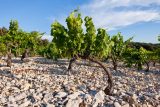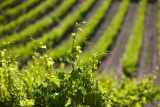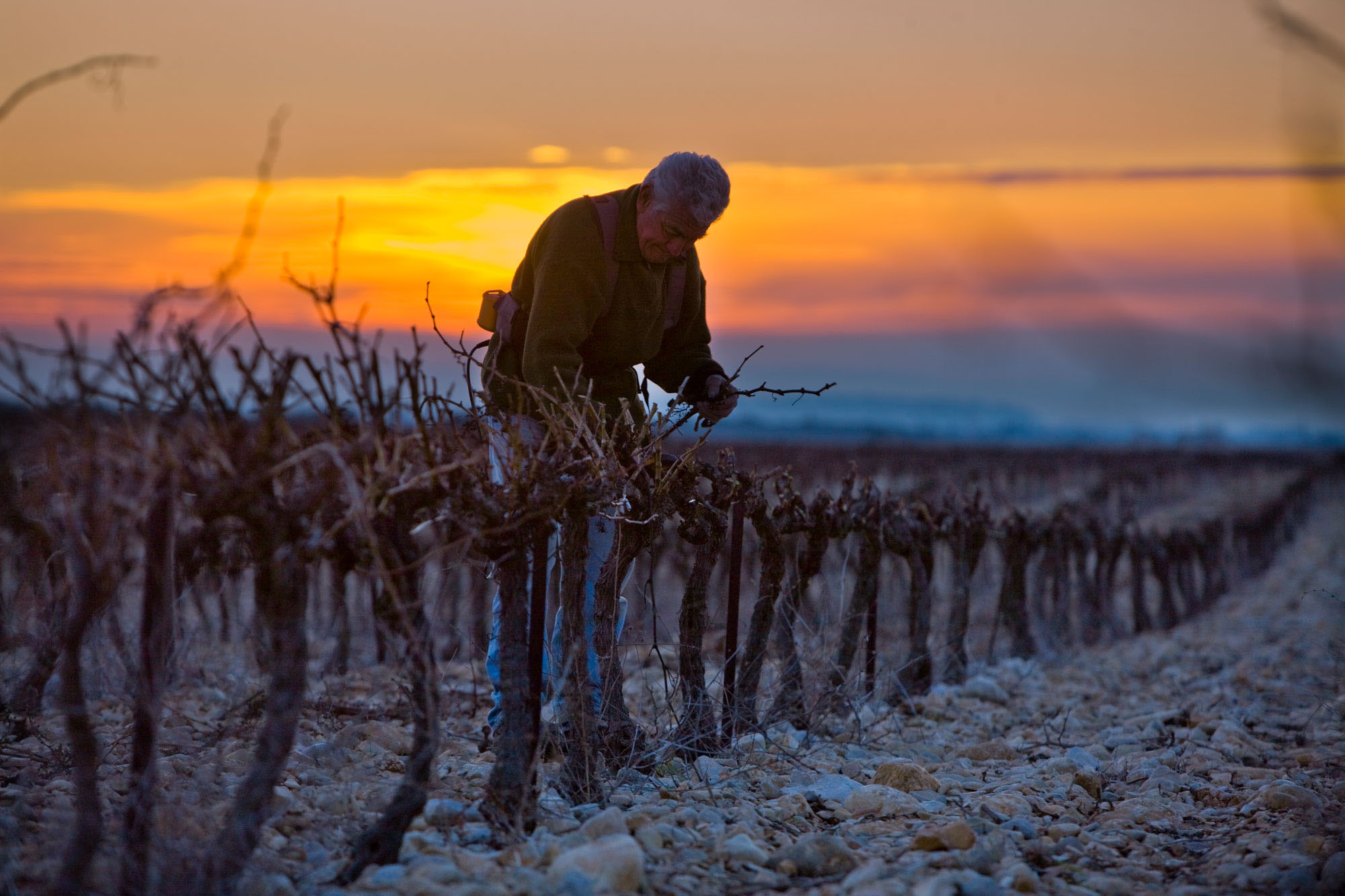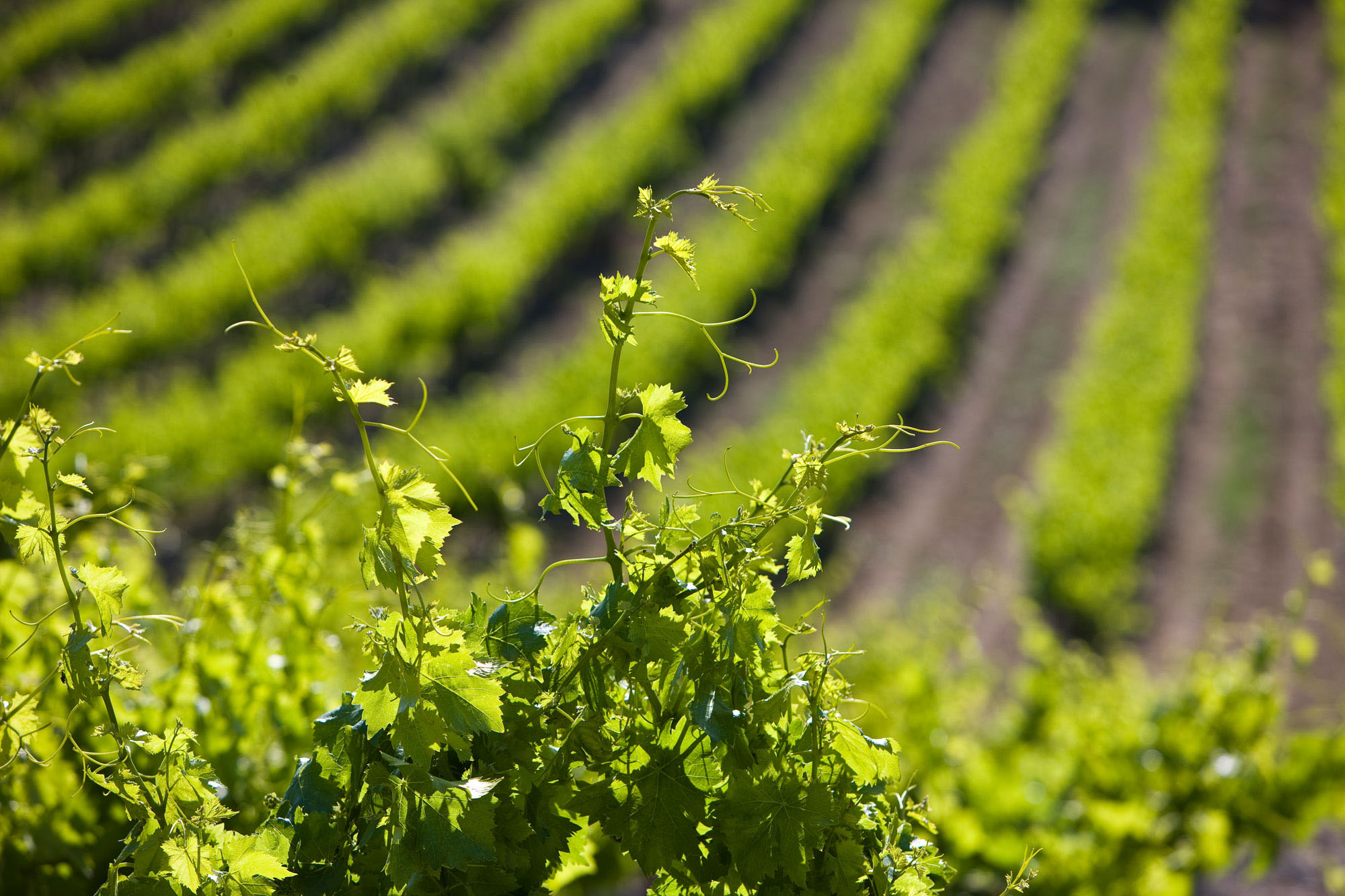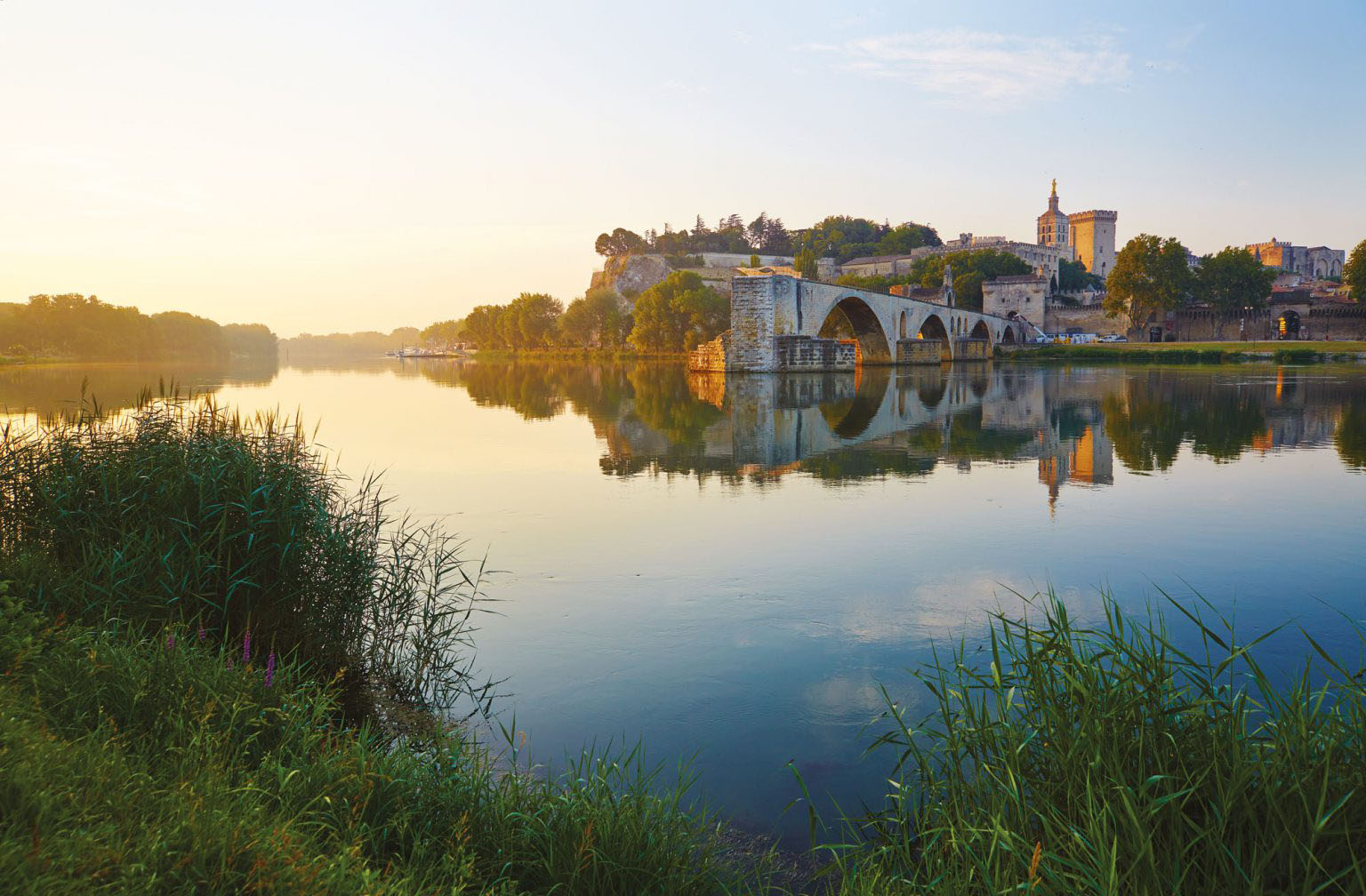THE ART OF BLENDING
Geology, climate, landscape, got that. But surely people have a role too?
Absolutely. We know that terroir includes geographical location and environmental conditions, but we should never underestimate the role of our people. It’s our winegrowers, for example, who decide which varietal to plant where, and winemakers work out how to blend them to create exactly what they’re looking for.
How much does that actually matter?
It’s essential. The choice of varietal is key, as each one has its own flavour attributes. Should the finished wine be fruity, spicy and structured? Smooth and easy-drinking? Does it need more acidity? Or maybe a touch of bitterness? Blending requires immense skill, years of experience and in-depth knowledge of local winemaking traditions. Imagine being a chef who only has one chance a year to create a superb new recipe! Of course with so many years of history, we have plenty of past experience to help us decide which varietals thrive in particular areas and how well they blend together.
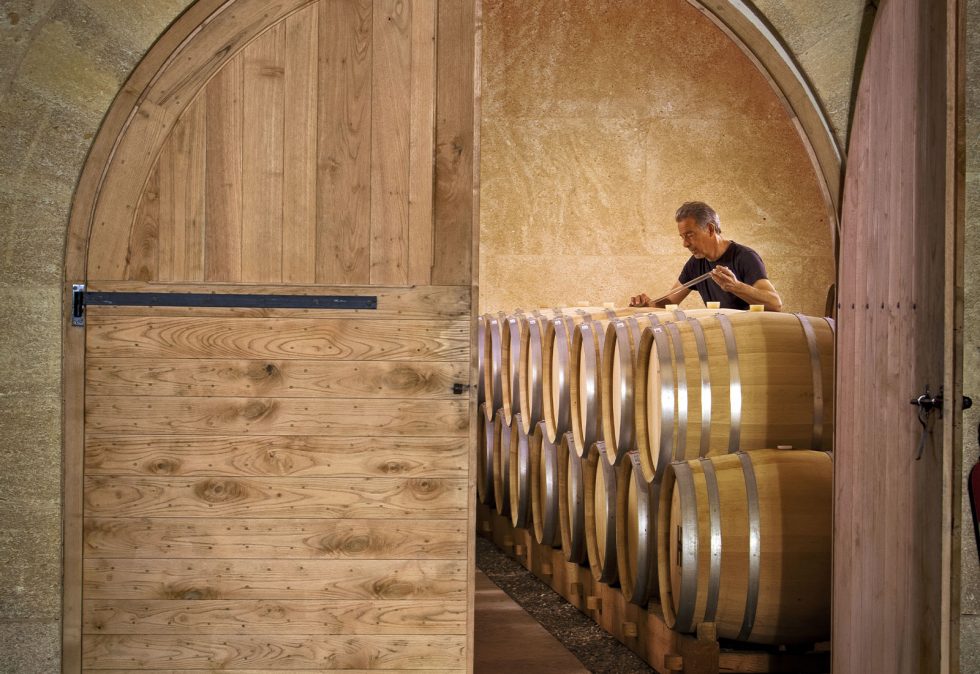
Winemakers in the Côtes du Rhône AOC can use up to 23 varietals, which gives them plenty to choose from.
Are there guidelines to help?
Yes, knowledge, experience and history! Wines from the Côtes du Rhône regional and Côtes du Rhône Villages appellations are blended wines at their best, easily rivalling (and maybe outshining?) Bordeaux. Most of the grapes we choose are the ones we know and love for their quality and flavour: Viognier, Syrah, Grenache, Mourvèdre, Marsanne and Roussanne. Syrah and Viognier are natives, while Grenache and Mourvèdre are originally from Spain but have adapted well and flourish in the heat of the southern Rhône Valley. Alone or in blends, they must make up between 70 and 80% of any Côtes du Rhône wine; this gives our AOCs consistency of flavour, while our winemakers have the freedom to use their favourite techniques. The terroir shines through, and the wines showcase the diversity of the appellation.
Which varietals get used most?
No contest: Syrah, Grenache and Mourvèdre. The Côtes du Rhône traditionally produce more reds than whites – reds make up about 86% of total production. These three are often also blended with small quantities of secondary varietals to give distinctively individual wines, but all with that unmistakeable Côtes du Rhône character.
Syrah is the northern Côtes du Rhône’s iconic grape, and is the only red grape used for the Crus. It creates powerful flavours of blackcurrant, blueberry, violet and blackberry, and an ageing potential to rival many of the French classics. It’s also becoming a favourite with some of the best New World winemakers. Here in its home region, though, it’s most commonly used in combination with Grenache and Mourvèdre.
Are all the grapes you grow native to the Côtes du Rhône?
Syrah is; Grenache and Mourvèdre originally came from Spain but have been grown in France since the Middle Ages, possibly brought in by pilgrims returning from Santiago de Compostela. Mourvèdre is from the Valencia region and grows well throughout France, but seems particularly at home in the Rhône Valley.
Both cope well with summer heat and drought, but need deep, limestone soils to really thrive. Together they account for most of the vineyard plantings in the southern part of the Côtes du Rhône, and can be more popular in these Mediterranean areas even than Syrah, as they ripen beautifully in the searing summer heat. They give Côtes du Rhône wines rich, complex aromas – fruity when young, acquiring a more rounded, spicy character on ageing. They show a very attractive ruby-to-dark-red colouring.
These three are at the very heart of the Côtes du Rhône, giving well-structured, flavourful wines which age well.
You said 23 varietals – we’ve only had 6 so far!
You’re right. The others – known as complementary varietals – include Bourboulenc, Carignan, Cinsault, Muscardin, Terret Noir and Ugni Blanc, and are added to blends in much smaller quantities to give the desired effect. Some (Muscardin, Roussanne and Marsanne) are native to the Rhône Valley, others come from Spain (Carignan) or Italy (Ugni Blanc). They help to soften the main varietals, adding a tang of acidity here, brightening the flavour there…
So with these non-native varietals – do you just plonk them in the ground and hope for the best?
No, there’s a lot of skill involved. Carignan is a prime example. Carignan was probably originally from Spain, and has taken quite a while to acclimatise. We almost gave up on it a while ago, but thank goodness we didn’t. It gives mouthwatering flavours of raspberries, cherries and blackberries, with a comforting undertow of leather, violets and even garrigue herbs.
So much for reds. What about whites?
Viognier is to Côtes du Rhône whites what Syrah is to its reds – an iconic native varietal, giving powerful, elegant, aromatic wines with a good few years’ cellaring potential. Both varieties have found fame well beyond their home region, and are now grown across most of the world.
Has Viognier always been one of the stars?
No, not really. In the 1950s it was falling into obscurity: official records showed only 30 hectares of Viognier plantings. But then along came Georges Vernay, winegrower and saviour of the Condrieu appellation, who cleared the old terraces in the village and re-planted them to Viognier. He not only saved the varietal, but ensured its future sustainability by using it to make powerful, rich and complex wines: these late-ripening grapes add scents of candied apricots and white flowers. Condrieu has become a spiritual home for Viognier. It’s the only grape authorised for use in the appellation, and is also widely grown across the Côtes du Rhône to make lusciously smooth, full-flavoured wines. Its enviable reputation has made it a popular choice throughout the Mediterranean too, as well as Europe, California, South Africa and Australia.
And Syrah?
The origins of Syrah are still shrouded in mystery. Scientists in France and America have been examining its DNA, and have shown it to be a cross between a varietal from the Ardèche and another from Savoie. Legend has it that when knight Gaspard de Sterimberg returned home from the Albigensian Crusade, he withdrew from everyday life to live as a hermit and grow Syrah on the hillsides of Tain-l’Hermitage. Syrah is the northern Côtes du Rhône’s dominant grape, growing in granite-rich soils to give aromas of spice, blackcurrants, blueberries, violets and blackberries. On ageing it acquires a classic touch of leather and animal pelts. It’s a favourite with the Rhône Valley Crus, and has become so popular that the planting area has grown 20-fold over the last 50 years. Syrah is now grown in all major wine producing countries, including (in descending order) Australia, Spain, South Africa and the United States.
So is there anything the Côtes du Rhône can teach the rest of the winemaking world?
The smooth, easy-drinking wines of the Côtes du Rhône are a source of inspiration the world over. Just look at California’s Rhone Rangers!
Who?
The Rhone Rangers are a not-for-profit organisation of American winemakers based in California, about halfway between San Francisco and Los Angeles. They started up in the 1980s and now number over 100 members, dedicated to producing and promoting Côtes du Rhône style wines made in America from Côtes du Rhône authorised varietals. Syrah, of course, has pride of place; others include Grenache, Mourvèdre, Cinsault, Carignan, Viognier, Roussanne and Marsanne.
So it’s a recent phenomenon?
Relatively recent. Around 1980 – 1990, American winemakers began to realise that the famous Bordeaux and Burgundy varietals were not the only French grapes to grow well and produce great wines in America, and tried planting traditional Rhône Valley varietals in California. The grapes flourished and the practice became widespread.
California embraced the Côtes du Rhône wholeheartedly, adopting not just their grapes, but their winemaking methods too. In short, Côtes du Rhône craftsmanship was transported wholesale across the ocean, first to California, then on to other American states and eventually to Australia, where Côtes du Rhône wines are also proving an inspiration for winemakers.
You must be very proud!
Yes, we’re very proud indeed to be a worldwide inspiration – although nothing will ever beat an original Côtes du Rhône!





